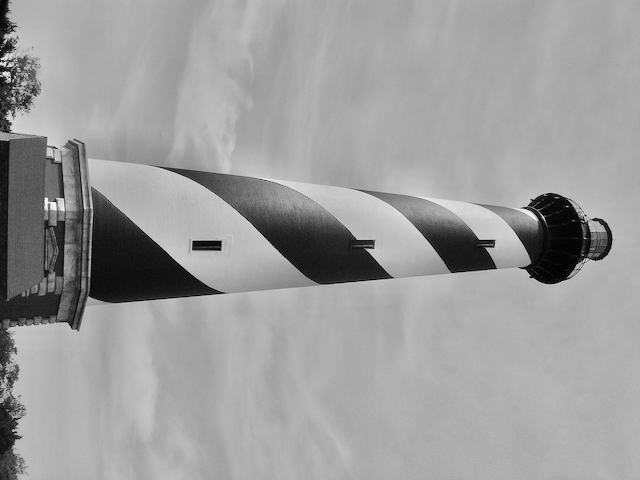I just went to see The Lighthouse, an enjoyably gothic story of the descent into madness of two lighthouse keepers. I loved the visual design of this film – black and white and square, with high-contrast shots of machinary and bleak landscapes. And there is a haunting, almost mechanical soundtrack, which recalls for me Johnny Greenwood’s soundtrack for There Will Be Blood.
Lighthouses are bleak, and building them must have been even bleaker. The story of the construction of the Eddystone lighthouse is a good example. The lighthouse warns sailors of a reef of submerged rocks 19km out to see from Plymouth. I have just read that the first structure was built from timber in the 1690s by painter and engineer Henry Winstanley. It’s rare to hear these days of people who call themselves painters and engineers. He certainly sounds brave. Winstanley was in his structure making repairs when the entire structure was swept along with him and his men in the Great Storm of 1703, reckoned to be a category two hurricane.
The keeper of the second lighthouse didn’t fare so well either, dying from ingesting molten lead when the roof caught fire.
The third structure is famous to civil engineers for the innovative use of lime mortar in the foundations, which is able to set underwater. The designer was John Smeaton, the first person to call himself a civil engineer (as far as we know). The foundations were so strong that when the structure was dismantled to make way for a new structure in the Victorian era, they had to leave the base behind. I hadn’t realised until reading just now that John Smeaton was a member of the Lunar Society, the incredible club of really useful non-conformists that included Josiah Wedgewood, James Watt, Joseph Priestly and my favourite, Erasmus Darwin – what a gang of people to hang out with. (Jenny Uglow’s book about the Lunar Men is a great read).
Bell Rock Lighthouse
Bell Rock Lighthouse stands 18km out to see east of the Firth of Tay. Designed by Robert Stevenson, it is a sea-washed structure, in other words, one in which the base is submerged for part of the day. But what the team who built this must have endured is unimaginable (read this account). They would have set off from the mainland in rowing boats to a construction site that is invisible for most of the day, being submerged by the tide. Before they could even start construction they had to build living quarters on stilts above the swell. That is brave construction work. And to their credit, the structure is still standing and saving lives 200 years later.


Leave a Reply